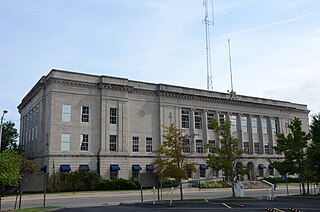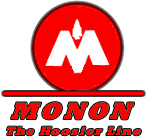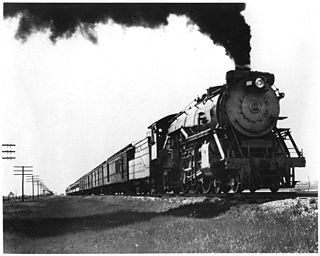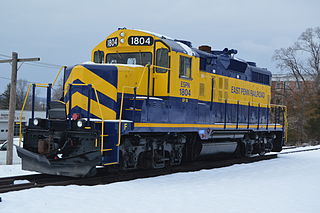Related Research Articles

Muskogee County is a county located in the U.S. state of Oklahoma. As of the 2010 census, the population was 70,990. The county seat is Muskogee. The county and city were named for the Muscogee (Creek) Nation. The official spelling of the name was changed to Muskogee by the post office in 1900.
Warner is a town in Muskogee County, Oklahoma, United States. The population was 1,641 at the 2010 census, an increase of 14.8 percent over the figure of 1,430 recorded in 2000. The town is home to one of the two Connors State College campuses.
Webbers Falls is a town in southeastern Muskogee County, Oklahoma, United States. The population was 616 at the 2010 census, a decline of 14.9 percent from the figure of 724 recorded in 2000.
Gore is a town in western Sequoyah County, Oklahoma, United States. It is part of the Fort Smith, Arkansas-Oklahoma Metropolitan Statistical Area. The population was 977 at the 2010 census, an increase of 15 percent over the figure of 850 recorded in 2000.
The Pere Marquette Railway operated in the Great Lakes region of the United States and southern parts of Ontario in Canada. It had trackage in the states of Michigan, Ohio, Indiana and the Canadian province of Ontario. Its primary connections included Buffalo; Toledo; and Chicago. The company was named after Père Jacques Marquette S.J. (1637–1675), a French Jesuit missionary who founded Michigan's first European settlement, Sault Ste Marie.

The Monon Railroad, also known as the Chicago, Indianapolis, and Louisville Railway from 1897 to 1971, was an American railroad that operated almost entirely within the state of Indiana. The Monon was merged into the Louisville and Nashville Railroad in 1971, and much of the former Monon right of way is owned today by CSX Transportation. In 1970, it operated 540 miles (870 km) of road on 792 miles (1,275 km) of track; that year it reported 1320 million ton-miles of revenue freight and zero passenger-miles.
The Midland Valley Railroad (MV) was a railroad company incorporated on June 4, 1903 for the purpose of building a line from Hope, Arkansas, through Muskogee and Tulsa, Oklahoma to Wichita, Kansas. It was backed by C. Jared Ingersoll, a Philadelphia industrialist who owned coal mining properties in Indian Territory. The railroad took its name from Midland, Arkansas, a coal mining town in western Arkansas, which was served by the railroad. The Midland Valley gained access to Fort Smith, Arkansas via trackage rights over the Frisco from Rock Island, Oklahoma.
The Fort Smith and Western Railway was a railroad that operated in the states of Arkansas and Oklahoma.

The Wichita, Tillman and Jackson Railway is a shortline railroad subsidiary of the Rio Grande Pacific Corporation that operates in Oklahoma and Texas. The line for which it is named extends from Wichita Falls, Texas to just north of Altus, Oklahoma, through Wichita County, Texas, Tillman County, Oklahoma, and Jackson County, Oklahoma. It interchanges with the Union Pacific (UP) and BNSF at Wichita Falls, with Farmrail (FMRC), Stillwater Central Railroad (SLWC), and the BNSF at Altus, and with Grainbelt (GNBC) at Frederick, Oklahoma. It carries predominantly grain, chemicals and agricultural products.
The Oklahoma City – Ada – Atoka Railway (OCAA) was formed from trackage from Oklahoma City to Atoka via Shawnee, Ada, and Coalgate, Oklahoma. Atoka to Coalgate had been built between 1882 and 1886 as feeder to the old Missouri–Kansas–Texas Railroad (Katy) main line, and Coalgate-Shawnee-Oklahoma City had been constructed by Katy affiliates, and specifically the first 40 miles northwest out of Coalgate having been built by the Texas and Oklahoma Railroad in 1902. The remaining 78 miles into Oklahoma City were built in the 1903-1904 timeframe by that line’s successor, the Missouri, Kansas and Oklahoma Railroad Company. These properties were not included in the 1923 reorganization of the Katy, and were put in the OCAA instead. The OCAA was sold to the Muskogee Company in 1929, becoming one of the Muskogee Roads.

The Arkansas–Oklahoma Railroad is a Class III carrier headquartered in Wilburton, OK that operates two segments of the former Chicago, Rock Island and Pacific Railroad (CRIP) Choctaw Route that originally ran between Memphis Tennessee and Tucumcari, New Mexico. AOK started operations on March 3, 1996 on 73 miles of track then owned by the U.S. state of Oklahoma between Howe and McAlester by assuming the existing lease of the Missouri Pacific, then wholly owned by the Union Pacific Railroad (UP). This lease included a purchase option which was exercised by AOK in April 2016. The line interchanges with the Kansas City Southern Railway at Howe, and with the UP at McAlester.

The Fort Worth and Denver Railway, nicknamed "the Denver Road", was a class I American railroad company that operated in the northern part of Texas from 1881 to 1982, and had a profound influence on the early settlement and economic development of the region.
The 5-mile (8.0 km) Reader Railroad was a tourist-only railroad operating in Hot Springs, Arkansas from 1973 to 1991. As a 23-mile (37 km) common carrier prior to May 1973, it was the last all steam locomotive-powered, mixed train railroad operating in North America. It operated trackage in Ouachita County and Nevada County, Arkansas. The five mile tourist railroad operated until 1991, when it could not meet the new federal safety regulations.
The Muskogee Roads was the colloquial name for a system of railroads under common management operationally headquartered in Muskogee, Oklahoma and controlled by the Muskogee Company of Philadelphia. The Muskogee Roads were the only Class I railroads to be headquartered in Oklahoma and had a major impact on the development and livelihood of the region.
The Choctaw, Oklahoma and Gulf Railroad (CO&G), known informally as the "Choctaw Route," was an American railroad in the states of Arkansas and Oklahoma.

East Penn Railroad is a short-line railroad that operates a number of mostly-unconnected lines in Pennsylvania and Delaware. Except for two industrial park switching operations, all are former Pennsylvania Railroad or Reading Company lines, abandoned or sold by Conrail or its predecessors.
The Osage Railway was incorporated in 1921 to accommodate traffic from the oil fields located in the Osage Nation. The first part of its mainline was constructed in 1922 from a connection with the Midland Valley Railroad at Foraker, Oklahoma, to the town of Shidler, Oklahoma, about 10 miles southwest. The line was independently owned from the Midland Valley, but was jointly operated with the Midland Valley and two other lines as part of the Muskogee Roads. Beginning July 2, 1923 and completing in early 1924, the Osage Railway's trackage was extended northwesterly from Shidler through Webb City to Lyman, Oklahoma, about another 6 miles.
The Wichita Falls and Northwestern Railway, its affiliate the Northwestern Railway Company of Texas, and two subsidiaries collectively constructed a railway running from Wichita Falls, Texas through Altus, Oklahoma to Forgan, Oklahoma, with a branch running from Altus to Wellington, Texas. The network comprised 359.3 miles of track, and was collectively known as the Wichita Falls Route.
The Muskogee Southern Railroad, which existed from 1902 to 1904, constructed only one line in its history. It built south from Muskogee, Oklahoma to the Canadian River, a distance of approximately 37 miles.
The St. Louis, San Francisco and New Orleans Railroad ran from Hope, Arkansas to a point near Ardmore, Oklahoma, and encompassed about 219 miles of track including a branch line. It existed from 1895 to 1907, when its assets were taken over by the St. Louis-San Francisco Railway (“Frisco”).
References
- 1 2 3 4 "Webber Falls Railroad Company, Webber Falls, Shawnee and Western Railroad Company". Railroads of Oklahoma, June 6, 1870-April 1, 1978, p. 72-73 (accessed on Oklahoma Digital Prairie). Archived from the original on September 26, 2022. Retrieved September 25, 2022.
- 1 2 "Webbers Falls, Shawnee and Western Railroad". Chronicles of Oklahoma, Summer 1973. Retrieved September 25, 2022.
- 1 2 3 4 5 6 "Will Put a New Service On The Webbers Falls Line". Muskogee County Democrat, February 4, 1915 (accessed on Newspapers.com). Archived from the original on September 26, 2022. Retrieved September 24, 2022.
- ↑ "Webbers Falls has history of booms, busts and tragedy". Yesina Jackson, Cherokee Phoenix, November 25, 2015. Archived from the original on March 9, 2021. Retrieved September 26, 2022.
- ↑ "Shawnee, Oklahoma to Warner, Oklahoma". Google Maps. Retrieved September 26, 2022.
- ↑ "Webbers Falls". Oklahoma Historical Society. Archived from the original on October 29, 2020. Retrieved September 26, 2022.
- 1 2 "Webbers Falls Railroad Company". 1916. Archived from the original on September 26, 2022. Retrieved September 25, 2022.
- ↑ "Webbers Falls Railroad". 1917. Archived from the original on September 26, 2022. Retrieved September 26, 2022.
- ↑ "Gore Oklahoma". Google Maps. Retrieved September 26, 2022.
- ↑ "Buying Whole Railroads and Reducing Them to Junk". Current Opinion, Volume 65, p.274-275, October 1918. 1918. Archived from the original on September 26, 2022. Retrieved September 26, 2022.